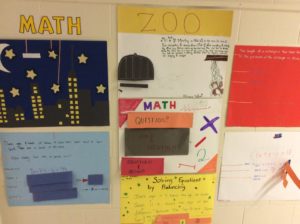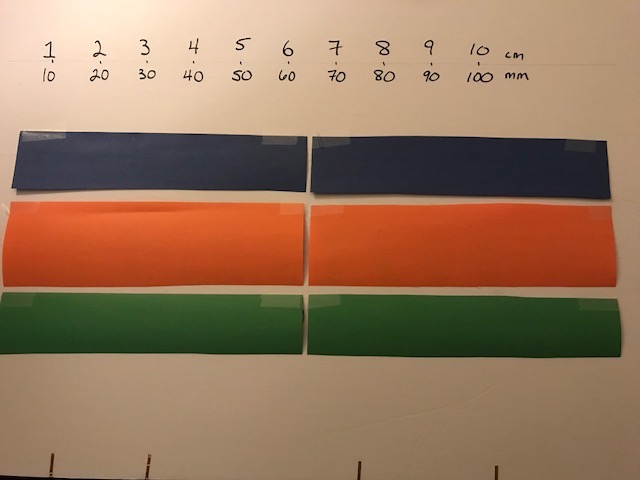The essence of mathematics is not to make simple things complicated, but to make complicated things simple. ~S. Gudd
Have you ever had your students question why they’re performing a certain activity? From my experience this statement is echoed most commonly within math class. “When will I use this?” “How is this valuable?”. It is for this reason I love the quote atop the page. The greatness of mathematics rests with simplicity. When there is a defined purpose and clear understanding often some of these issues dissipate.
Now there are several ways to make math more appealing for students including gamification, integration, making, among many more. The purpose of this post however is to share something I’ve found particularly powerful. A true game changer within my classroom was to create interactive math posters.
Why?
Students in this scenario undergo a role reversal where they are actually the creators of content rather than consumers. Students work collaboratively to create a meaningful/authentic problem, solve it, and share their understanding. Now while that seems logical I want to express why this has been powerful for me.
- Reduction of Math Anxiety: Let’s face it, some students come to us believing math is the enemy. When placed in this group setting however they feel supported by peers and it allows them to share their ideas within a positive environment. Since they are working on ONE meaningful problem they aren’t rushed to complete a plethora of questions which they have limited vested interest. Even if math is not considered a strong point for them there is an artistic portion, collaborative aspect, and creative element where every student can feel successful. This level of improved personal validation and student self efficacy is proven to enhance student performance.
“Meta-analysis research indicates that academic self-efficacy is the best predictor for student retention and academic achievement” (Robbins 2004)
- Kinesthetic: The great thing about this approach is that students have the opportunity to get up and move. There is a social element as well which makes this far more engaging than completing a worksheet. After students have created their problem they go around the room solving other groups posters. At the conclusion of the activity everyone gathers to discuss reflect on their learning. Since every poster has step by step instructors programmed by each group everyone has the opportunity to be successful and learn WHY a given concept is structured in a certain way.
” Research support for active involvement (engagement) is so formidable that it has been referred to as the “grand meta-principle” of student learning ” (Cross 1993)
- Skill Set Acquisition: Not only are students becoming more invested in their learning but they are also learning additional skills in the process. They are programming, and utilizing both design and computational thinking processes.
Below are just a few examples of posters which were created in under 40 minutes.

Interactive Math Posters
Benefits:
Collaborative
Integrated
Meaningful & Authentic
Students Justify Reasoning
Increased Number Sense, Problem Solving, and Communication via Number Talks
Something New
Interactive Double Number Line
Some of the benefits of the number are is that it is linear making it easy for students to grasp. You have the option to use either “open” or “closed” but the linearity supports multiple learning strategies. There is also merit to establishing creative problem solving along with increasing their mathematical understanding and complexity. It is diversified and allows for much more than simply additive functions. This model supports additive and multiplicative inverses. Finally there is a visual element to all of this. Visual learners also have the ability to see the process rather than simply a product. I have created a quick video which just illustrates how one could be constructed. These can be constructed using both Makey Makey and Scratch. If you require support in creating these please reach out and I will be happy to assist.
Video:
Resources:
Bright, George W., et al. “Identifying Fractions on Number Lines.” Journal for Research in Mathematics Education, vol. 19, no. 3, 1988, p. 215., doi:10.2307/749066.
Cross, K. P. (1993). Reaction to “Enhancing the productivity of leaning” by D. B. Johnstone. AAHE Bulletin, 46(4), p. 7.
Robbins, S. B., Lauver, K., Le, H., Davis, S., Langley, R., & Carlstrom, A. (2004). Do Psychosocial and Study Skill Factors Predict College Outcomes?: A Meta-Analysis Psychological Bulletin, 130 (2), 261-288.

